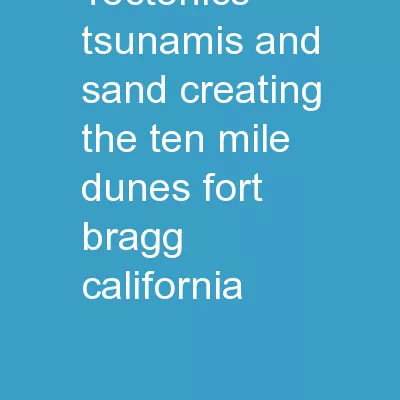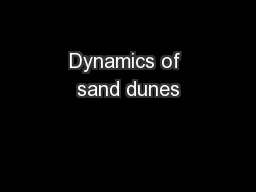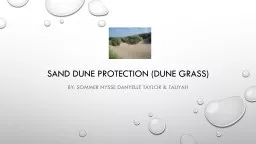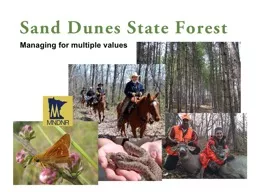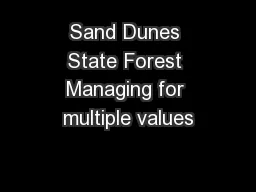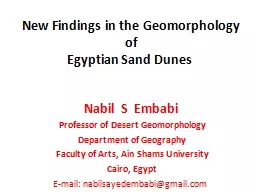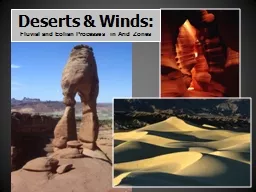PPT-Tectonics, Tsunamis, and Sand: Creating the Ten Mile Dunes, Fort Bragg, California
Author : lois-ondreau | Published Date : 2018-11-07
ABSTRACT An extensive area of coastal sand dunes at the north end of Northern Californias MacKerricher State Park lies atop a differentially subsided section of
Presentation Embed Code
Download Presentation
Download Presentation The PPT/PDF document "Tectonics, Tsunamis, and Sand: Creating ..." is the property of its rightful owner. Permission is granted to download and print the materials on this website for personal, non-commercial use only, and to display it on your personal computer provided you do not modify the materials and that you retain all copyright notices contained in the materials. By downloading content from our website, you accept the terms of this agreement.
Tectonics, Tsunamis, and Sand: Creating the Ten Mile Dunes, Fort Bragg, California: Transcript
Download Rules Of Document
"Tectonics, Tsunamis, and Sand: Creating the Ten Mile Dunes, Fort Bragg, California"The content belongs to its owner. You may download and print it for personal use, without modification, and keep all copyright notices. By downloading, you agree to these terms.
Related Documents

